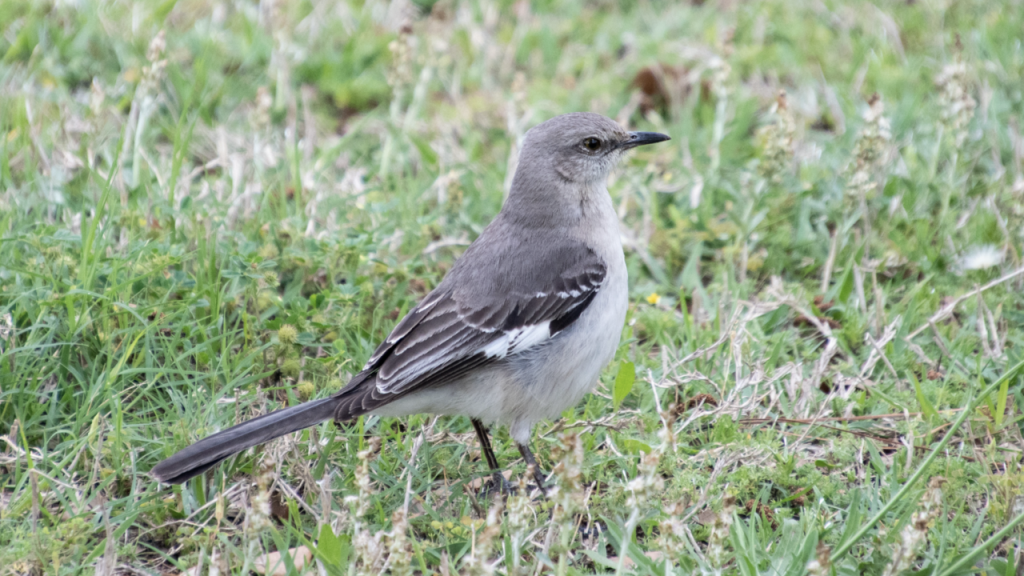Have you ever wondered what bird represents the spirit of Mississippi? Knowing the state bird is more than just a fun fact—it connects you to the culture and nature of the place.
Imagine spotting this bird in your own backyard or understanding why it holds a special place in Mississippi’s heart. Keep reading to discover the Mississippi state bird and what makes it so unique. You might be surprised by how much this little creature can tell you about the state’s identity.

Credit: www.facebook.com
Mississippi State Bird Identity
The Mississippi state birdis the Northern Mockingbird. This bird is well-known for its ability to mimic sounds. It copies songs from other birds and even noises from its surroundings. The Northern Mockingbird has a gray bodywith white patches on its wings. It is about 10 inches long and has a long tail.
This bird is common across Mississippi and is loved for its beautiful and varied songs. It sings mostly during spring and summer to attract mates and protect its area. The bird stays active during the day and is easy to spot in parks and backyards.
- Scientific name:Mimus polyglottos
- Color:Gray with white wing patches
- Size:About 10 inches long
- Song:Mimics other birds and sounds
- Habitat:Urban areas, forests, and gardens
Physical Traits
The Mississippi state bird is the <strong mockingbird. It is known for its medium sizeand slender body. The bird has grayish upperpartsand lighter underparts. Its wings show white patchesthat are visible in flight.
This bird has a long tailand thin legs. Its beak is slightly curved and sharp. The Northern Mockingbird’s eyes are dark and bright, helping it see well at night.
- Length:About 10 inches
- Wingspan:Around 12-15 inches
- Color:Gray with white wing bars
- Tail:Long and rounded
Habitat And Range
The Mississippi State Bird, the <strong"northern mockingbird", lives in many places. It is found across the entire state of Mississippi. It likes open areassuch as fields, parks, and gardens. You can see it in cities and rural lands alike.
This bird is very good at living in many habitats. It nests in shrubs or small trees. It prefers places with lots of bushes and low trees. It also lives near farms and roadsides.
- Range: All over Mississippi
- Habitat: Open fields, parks, gardens, city areas
- Nesting: Shrubs, small trees
- Common near: Farms, roads, and yards

Credit: www.facebook.com
Diet And Feeding Habits
The Mississippi State Bird has a varied diet. It eats insects, seeds, and berries. Bugs are its favorite food. It catches them in flight. It also pecks seeds from the ground.
This bird loves berries. It finds them on bushes. The bird enjoys the sweet taste. Sometimes, it visits gardens for food. Bird feeders attract them too.
Its feeding habits change with seasons. During winter, food is scarce. The bird relies on seeds. In spring, insects are abundant. This changes its diet.
Birds need water to survive. They drink from puddles and streams. This keeps them healthy and strong.
Behavior And Vocalization
The Mississippi state bird is known for its lively behavior. It often moves quickly through trees and bushes. This bird is activeduring the day and likes to find food on the ground or in low branches.
Its vocalizationis clear and sweet. The bird sings a series of short, cheerful notes. These sounds help it communicate with others and mark its territory. People often recognize the bird by its melodic songand friendly calls.
Cultural Significance
The Mississippi state bird, the <strongnorthern mockingbird, holds special meaning. It is a symbol of freedom and beauty. People admire its mimicry skills, copying other birds’ songs.
It appears in many local stories and songs. The bird’s presence shows nature’s diversityin Mississippi. It connects people to their natural environmentdaily.
- Seen in many backyards and parks
- Represents joy and creativity
- Commonly used in art and school projects
- Encourages birdwatching and outdoor activities
Conservation Status
The Mississippi state bird, the Northern Mockingbird, is not endangered. It is a common bird found across many states. Its population is stable and healthy. The bird adapts well to different environments, from cities to forests.
Conservation efforts help keep this bird safe. Laws protect the Northern Mockingbird from harm. People are encouraged to create safe spaces for birds in their yards.
- Status:Least Concern
- Population Trend:Stable
- Protection:State and federal laws
- Habitat:Urban and rural areas

Credit: www.facebook.com
Frequently Asked Questions
What Bird Is The Official State Bird Of Mississippi?
The Northern Mockingbird is Mississippi’s official state bird since 1944.
Why Was The Northern Mockingbird Chosen For Mississippi?
It was chosen for its beauty, song, and common presence in the state.
Where Can You Commonly See The Mississippi State Bird?
Northern Mockingbirds are found in yards, parks, and open areas across Mississippi.
Conclusion
The Mississippi state bird is a symbol of nature’s beauty. It shows the state’s unique wildlife and charm. People enjoy watching this bird in parks and forests. It reminds us to protect natural habitats. Knowing about the state bird helps us appreciate Mississippi more.
A small bird with big meaning. Simple, yet special. This bird connects people to the land and its history. It makes Mississippi proud.
